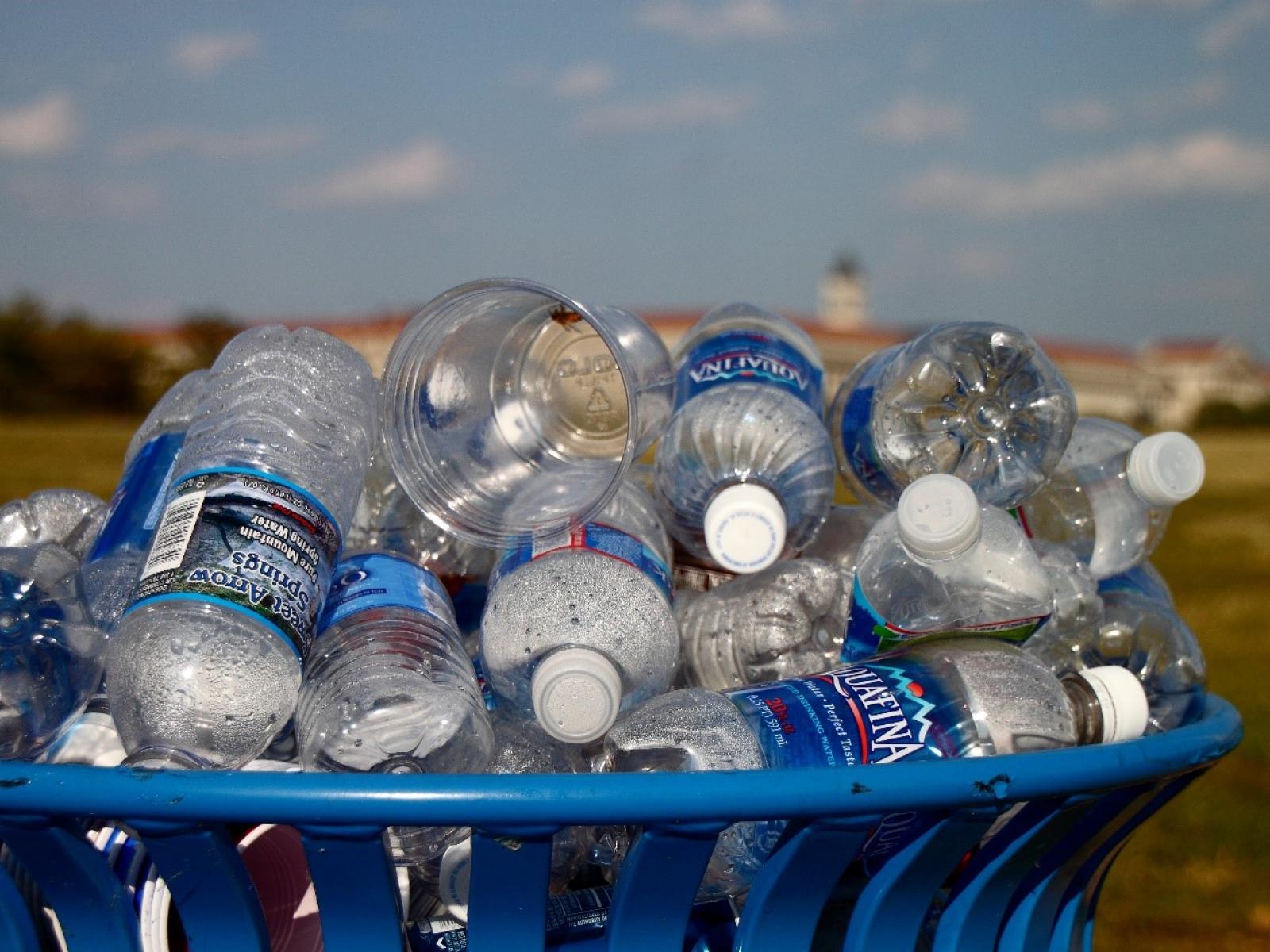Highly Active Plastic Upcycling Catalysts Discovered
Decreasing the amount of precious metal in a system increased its efficiency and selectivity for breaking apart plastics

Decreasing the amount of ruthenium in a system improved its ability to convert plastics into valuable chemicals.
The Science
Recycling plastics is a challenging process. One route to reuse involves breaking down plastics into valuable chemicals, known as polymer upcycling. This is difficult to do selectively, as the long carbon-based chains that make up plastics can be converted into a wide range of molecules. Researchers studied a ruthenium (Ru) based catalyst supported on cerium oxide (CeO2). They found that decreasing the amount of Ru in the system improved polymer upcycling efficiency and selectivity. The catalyst improvement came at the point where the Ru transitioned from ordered nanoparticles to disordered rafts of atoms.
The Impact
Single-use plastic packaging is nearly ubiquitous, containing everything from beverages to electronics. This has led to a demand for technologies that can upcycle plastic waste into valuable chemicals traditionally derived directly from petroleum. This work offers both a new type of catalyst, disordered metal rafts, and a general strategy to generally improve supported metal catalysts for polymer upcycling. These results will hopefully lead to a plastic upcycling process that is cheaper, faster, and utilizes feedstocks more efficiently.
Summary
Breaking chemical bonds with the assistance of hydrogen is a reaction known as hydrogenolysis—a promising strategy to convert plastic waste into value-added small hydrocarbons. This requires efficient and selective catalysts, which are currently under development. New research demonstrated that dropping the amount of Ru loaded onto CeO2 to ≤ 0.5 wt% enhanced the efficiency and selectivity of the system. The catalyst exhibited drastically higher hydrogenolysis activity and selectivity towards high-value liquid alkanes in the conversion of polypropylene and polyethylene polymers. An increase in the disorder of the Ru structures accompanied the abrupt improvements in catalytic performance. The high-performing Ru species were identified as positively charged and smaller than a nanometer. The stronger adsorption of dissociated hydrogen and the correspondingly higher hydrogen coverage led to the shift in selectivity for the low-loading Ru/CeO2. This also caused a different rate dependence on hydrogen pressure than the high-loading Ru/CeO2. This new type of catalyst has improved efficiency and selectivity for plastic upcycling compared to previous literature examples. The conclusions of this work also established a general catalyst design strategy to reach enhanced performance and deepened scientific understanding of polyolefin hydrogenolysis chemistry.
PNNL Contact
Janos Szanyi, Pacific Northwest National Laboratory, Janos.Szanyi@pnnl.gov
Funding
This work was supported by the Department of Energy (DOE), Office of Science, Basic Energy Sciences program (BES), Division of Chemical Sciences, Geosciences, and Biosciences and was carried out at the Pacific Northwest National Laboratory. O.Y.G. was supported by the DOE, Office of Science, BES, and Division of Chemical Sciences, Geosciences, and Biosciences (Toward a polyolefinbased refinery: Understanding and controlling the critical reaction steps, FWP 78459). This research used resources of the Advanced Photon Source, an Office of Science user facility operated for the DOE by Argonne National Laboratory.
Published: August 2, 2022
L. Chen, L. Meyer, X. P. Hernandez, L. Kovarik, D. Meira, H. Shi, K. Khivantsev, O. Y. Gutierrez, and J. Szanyi. 2022. “Disordered, Sub-Nanometer Ru Structures on CeO2 are Highly Efficient and Selective Catalysts in Polymer Upcycling by Hydrogenolysis,” ACS Catal., 12(8), 4618–4627. [DOI: 10.1021/acscatal.2c00684]